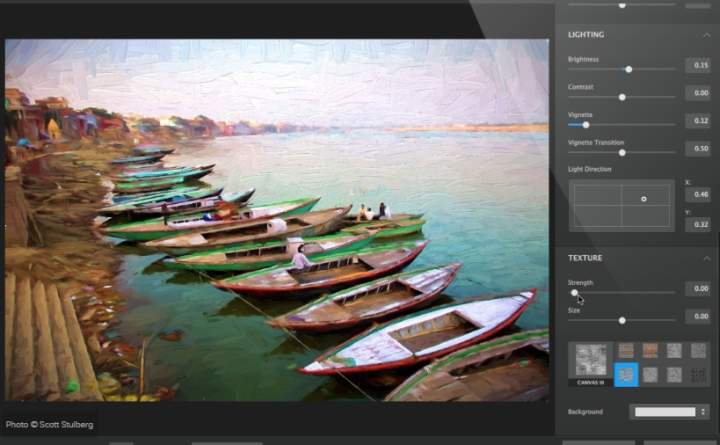
#TOPAZ STUDIO PRESETS DOWNLOAD#
Given its free, and assuming you have a reasonably up to date computer, I would download it and give it a try (there are several training videos from Topaz, but most are about the more exotic uses for Topaz, e.g. I'm never very impressed with the builtin presets, but they do give you some insight into the multiple different way your image might look, and can be a useful learning tool.

This then gives you a head start on any further tweaking you might want to make to the image.

The main attraction of programs like Topaz, is ease of use and that they provide lots and lots of previews of how your image might look at different settings (presets), allowing you to just click on the preview you like best, and letting the program make all the adjustments for you. I doubt the Topaz Studio raw processing will be as good as Lightroom (or Capture One), but have no evidence to support this. If you ignore the DAM features in Lightroom, then this latest incarnation of topaz (as Topaz Studio), probably offers more capability than Lightroom, and really is more of a competitor for Photoshop or Affinity Photo.
#TOPAZ STUDIO PRESETS FULL#
Buying all the Plugins is an expensive business, but many (most) photographers probably have little interest in owning the full set of plugins. more advanced sharpening or noise removal etc. You can then add low cost Studio plugins (roughly equivalent to the Topaz plugins available for Photoshop) into Topaz Studio to extend its capability e.g. Which is something Lightroom cannot do, but Lightroom offers alternative approaches for selective adjustments.
#TOPAZ STUDIO PRESETS FREE#
Topaz Studio has no DAM features, and therefore offers no cataloguing tools to manage your photograph collection (but, not everyone wants this), but even the free version has the capability to crop, lighten, and darken images modify colour and contrast etc, including doing this as adjustment layers. As is Affinity Photo, so this could well be a LR replacement, Topaz, are not making any promises about adding a DAM in the future, but both Luminar and OnOne, either offer or are promising future DAM capability.

Topaz seems to offer more "creative" options than Luminar and OnOne, allowing you to create images that bear very little relationship to the original photograph, while also offering the same or similar photo editing tools. This is also the case with programs like Luminar and OnOne: both of these originally ran from inside Photoshop as Plugins, but are now stand alone programs competing as LR/Photoshop alternatives, while still also working as Photoshop Plugins. However, it seems that Topaz are now also promoting Studio as a Lightroom+Photoshop alternative, and it probably offers the majority of the tools than many photographers might need/want. So you no longer "need" a host program to use the topaz plugins, even though Studio can still be used as a Photoshop or Lightroom, or Affinity Photo Plugin. Topaz "Studio" has integrated these plugins into a single stand alone program. Topaz, started out by making plugins for Photoshop that added dedicated tools like noise reduction, or sharpening capability that were easier (and maybe better) to use than the built in Photoshop capabilities. I primarily use a Capture One+Photoshop combination, so paying twice the amount I probably need to For "me", the only real competition for this combination comes from Capture One + Affinity Photo, which, now that Capture One seems to have fallen into annual upgrades, is going to cost about the same (annually) as the Adobe option, but with higher initial costs to buy the initial licenses. There are some limitations in how far Lightroom can take that editing, but for some (possibly most people) this is not a practical limitation, while for others, this means moving the files from Lightroom into a more advanced editing program like Photoshop or Affinity Photo to finalise the editing.Īs Lightroom is now only available a subscription (which includes Photoshop), a Lightroom + Photoshop combination provides an incredibly powerful "do anything" combination at a reasonable cost, albeit through subscription (which is a separate discussion).

Lightroom is primarily a DAM (cataloguing tool), which can convert RAW files into finished Tiffs, Jpegs or prints(and can also edit existing Tiffs and Jpegs). This really depends on the context of the question, and what aspects you are interested in.


 0 kommentar(er)
0 kommentar(er)
